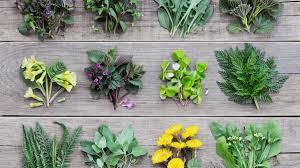
Breaking News
DRINK 1 CUP Before Bed for a Smaller Waist
 Nano-magnets may defeat bone cancer and help you heal
Nano-magnets may defeat bone cancer and help you heal
 Dan Bongino Officially Leaves FBI After One-Year Tenure, Says Time at the Bureau Was...
Dan Bongino Officially Leaves FBI After One-Year Tenure, Says Time at the Bureau Was...
 WATCH: Maduro Speaks as He's Perp Walked Through DEA Headquarters in New York
WATCH: Maduro Speaks as He's Perp Walked Through DEA Headquarters in New York
Top Tech News
 Laser weapons go mobile on US Army small vehicles
Laser weapons go mobile on US Army small vehicles
 EngineAI T800: Born to Disrupt! #EngineAI #robotics #newtechnology #newproduct
EngineAI T800: Born to Disrupt! #EngineAI #robotics #newtechnology #newproduct
 This Silicon Anode Breakthrough Could Mark A Turning Point For EV Batteries [Update]
This Silicon Anode Breakthrough Could Mark A Turning Point For EV Batteries [Update]
 Travel gadget promises to dry and iron your clothes – totally hands-free
Travel gadget promises to dry and iron your clothes – totally hands-free
 Perfect Aircrete, Kitchen Ingredients.
Perfect Aircrete, Kitchen Ingredients.
 Futuristic pixel-raising display lets you feel what's onscreen
Futuristic pixel-raising display lets you feel what's onscreen
 Cutting-Edge Facility Generates Pure Water and Hydrogen Fuel from Seawater for Mere Pennies
Cutting-Edge Facility Generates Pure Water and Hydrogen Fuel from Seawater for Mere Pennies
 This tiny dev board is packed with features for ambitious makers
This tiny dev board is packed with features for ambitious makers
 Scientists Discover Gel to Regrow Tooth Enamel
Scientists Discover Gel to Regrow Tooth Enamel
 Vitamin C and Dandelion Root Killing Cancer Cells -- as Former CDC Director Calls for COVID-19...
Vitamin C and Dandelion Root Killing Cancer Cells -- as Former CDC Director Calls for COVID-19...
Ten wild edibles in North America that could save you in a survival situation

Across North America's forests, fields, and wetlands grows an unregulated apothecary — plants densely packed with vitamins, minerals, and healing compounds. But this bounty comes with a caveat: for every life-sustaining wild green or berry, there exists a nearly identical twin capable of inducing organ failure.
Survival isn't just about stockpiling beans and bullets — it's about recognizing the land's hidden abundance while avoiding its lethal decoys. This is primal knowledge, the kind that sustained indigenous cultures for millennia and can keep modern foragers alive when supply chains crumble.
Key points:
Wild edibles from dandelions to cattails provide emergency calories, critical nutrients, and natural medicine.
Deadly lookalikes like death camas (vs. wild garlic) and horse nettle (vs. stinging nettle) demand 100% identification certainty.
Foraging ethics protect ecosystems: Never over harvest, avoid polluted areas and respect private property.
Processing methods matter: leaching acorns and neutralizing nettle stings make these otherwise toxic plants edible.
Saw palmetto berries (immune support) and red clover (blood purifier) offer medicinal options.
Wild food as survival insurance
The dandelion (Taraxacum officinale), dismissed as a lawn weed, carries more vitamin A than carrots and enough potassium to rival bananas. Its root, when roasted, becomes a caffeine-free coffee substitute rich in prebiotic inulin — a gut health essential when processed foods vanish. But complacency kills: false hawksbeard and catsear mimic dandelion leaves, though their branched flower stems and lack of milky sap betray them.



